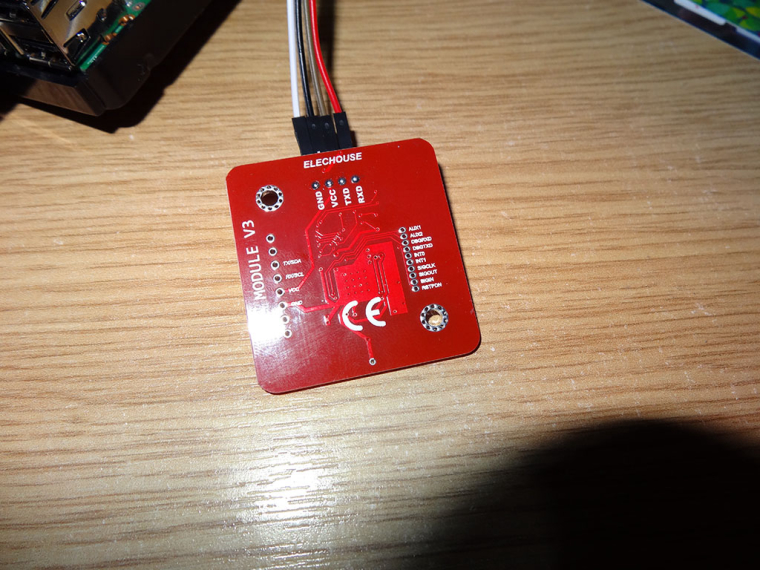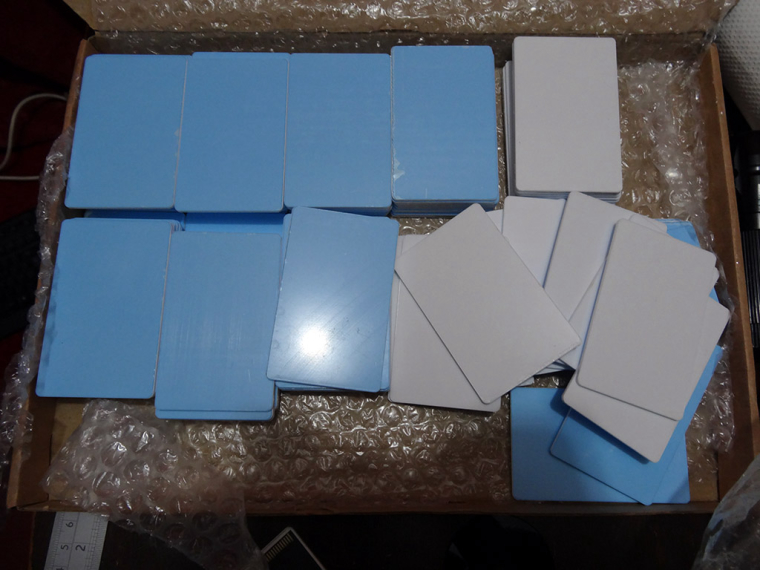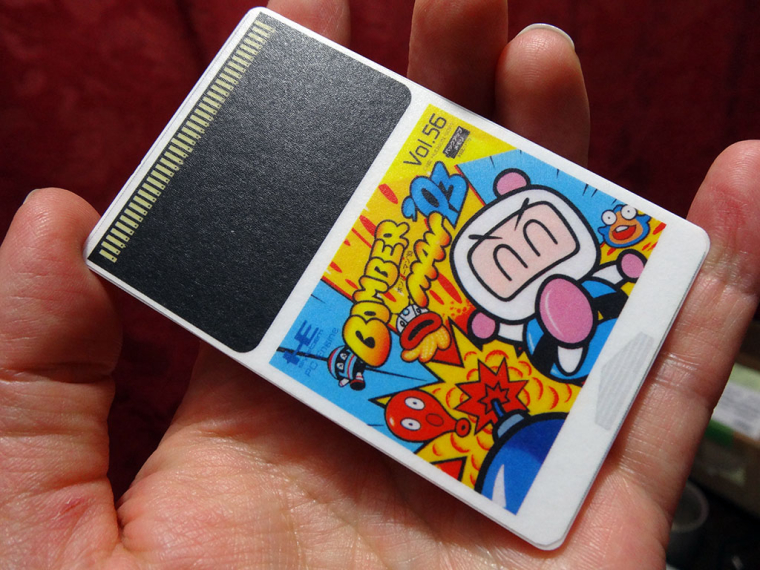PC Engine build
-
@darksavior
Thanks for the reply.I'm actually thinking now that I may just go the NFC tag route. It's a gimmick I know but I really like the idea of recreating the whole experience - physically browsing through game cards would be very nostalgic. I had thought about it for my Neogeo and SFC builds but decided against it but it seems a perfect fit for this build as I can easily and cheaply produce fake hucards as they are such a simple design and would be fun to make.
I need to do some research though - I need it to work alongside the powerblock which itself takes up some gpio pins so I guess a USB NFC reader would be the way to go. I'd need it to read the NFC as soon you boot up the console and then launch the inserted game directly completely bypassing EmulationStation. At the moment I only have vague ideas about how to achieve all this but I know others have made similar builds so hopefully I can learn from them.
-
@ruckage You might want to look at this page for NFC inspiration: http://www.daftmike.com/2016/07/NESPi.html
Also, would you just 3d-print a whole bunch of Hu-Cards? Or would you buy cheap games and gut them?
-
@lilbud Thanks, yeah i had seen that one - it's definitely a good source for some ideas.
Even buying cheap Hucards would get expensive as the cheapest available in the UK are £4 each - obviously that would add up quickly if I wanted to make a lot of cards (which I do :) ).
3d printing would also be expensive and very slow.Luckily the Hucard is a very simple design as it's more or less just a rectangle. I know someone who does laser cutting so I'm thinking that having the Hucards cut from acrylic and then making full face labels myself that replicate the look of the Hucard will be a pretty good approximation and should hopefully be affordable.
-
@ruckage sounds good!
-
@ruckage I don't know if this is part of your plan, but a transparent replica of Hucard could be an awesome thing!!! Will look like a crystal special edition!!! 😁
-
I've been playing around and have designed a nice label I can use for the replica Hucards and once I printed one out as a test I realised the size looked very familiar - turns out Hucards are exactly the same size as a credit card. I know they are always described as 'credit card sized' but wasn't aware it was quite so literal.
This now gives me another option - I could just buy NFC cards and use those. Obviously they would be much thinner than a real Hucard but would definitely be very cost effective.
-
@ruckage I found a video showing a similar project using NFC with Raspberry Pi to simulate Snes cartridges. Take a look:
-
It's been a long while since I posted an update but I've made some major progress now. I have my NFC reader working now and using python I can retrieve the rom name from the nfc tag and launch the rom. This was my main hurdle so now I have that working I should be able to progress much more quickly.
I had trouble originally for 2 reasons. The NFC reader I originally bought was fake and I was using spi to connect the nfc reader to the pi.
The problem with the fake reader was that its range and reliability were not very good. In the end I bought a reader directly from Elechouse and the range/reliabilty is much better.

The problem with spi was that I couldn't find a way to access the ndef data. So after finding a tutorial online I switched to uart and now I can use NFCPY to access that data. Through trial and error I modified an example python program to achieve what I wanted, I admit I am lost when it comes to python as I've never used it before but the code seems to work as expected which is what matters.
I've also had loads of HuCard blanks laser cut from acrylic in preparation. I also had some problems in that regard as the first batch I received weren't cut correctly but luckily the person who cut them for me was happy to cut them again.

Finally here is quick test I did to see how the cards will look once I apply the labels I'm making.

-
I've been trying to get this to boot as fast as possible, so far it takes 13 seconds from the rainbow square to when the game starts which isn't bad but I'd still like to improve that if possible. I've read that removing/disabling samba may help so once everything is setup I may give that a go.
I have a speedy SD card (sandisk extreme plus), and I've set the pi to not wait for network on boot which always makes a big difference. I also tried oveclocking the SD card but I didn't notice any real improvement to the boot time. Any other suggestions would be welcome.I've made a loading animation so at least for those 13 seconds it looks interesting. It's inspired by some Hudson Soft trailers I saw which featured 2 Bombermen kicking a bomb to each other. I used sprites and a background from a few different Bomberman games (with some editing) to make the splash animation. I think bomberman is a pretty good mascot for the system but I may do a few others featuring Bonk and Air Zonk as they are the more official mascots and I can have a random boot animation each time.
If anyone is interested in having the splash video I can make a more generic version by replacing the 'PC engine' logo with the 'Retropie' logo.

Out of curiosity is there any way to force the splash video to stop as soon as retropie has finished booting (or in my case when runcommand is launched?) It would save having to trim videos to an exact size to fit the boot time. I could just have a longer video then which would stop automatically. Even better would be the ability to have a short looping video which could loop repeatedly until retropie has finished booting (I'm fairly sure that isn't possible though ).
-
@ruckage said in PC Engine build:
Even better would be the ability to have a short looping video which could loop repeatedly until retropie has finished booting (I'm fairly sure that isn't possible though ).
Anything is possible with the magic of programming. You'd probably have to have a script or daemon of sorts that loops until emulationstation is called or something.
I haven't looked at it since it's switched to systemd but you should be able to modify the boot script to cut out once es loads
-
Your attention to detail on these builds is incredible! Great work as always!
-
@ruckage said in PC Engine build:
...and I've set the pi to not wait for network on boot
How did you do that? My FamicomPi takes also longer to boot up and mostly because of the network check.
Awesome work on the splashvideo!
-
@herb_fargus
Thanks for the info, I'll look into it. I tend to muddle through anything to do with Linux but usually get there in the end.@FlyingTomahawk
It's a setting in raspi-config.Go to 'boot options'.
Select 'Wait for network on boot'
select 'no'It should make a big difference (it has on all my builds at least), let me know if it improves things for you.
-
Thank you!
Will try this today after work. I'll also check the boot time. Keep you updated asap.
-
@ruckage said in [PC Engine build]:
I was initially hesitant as this is a working machine and they are fairly rare over here. I decided though that as it would need various mods to even get it working on a TV over here that I will convert it - however I'm being very careful so that at a later date it could be returned to an almost original state if needed.
A man after my own heart. Respect the classics! Not many of these Retro consoles left, so look after them :)
Always makes me worried when people tear apart old consoles just to put a Raspberry Pi in them. They are finite and only getting old (I know there are millions, but still). But its nice to see if someone does do this they do it in a way that the console can be restored if needed.
-
@ruckage now, if you really want to be ambitious you could look into Plymouth boot splashes... Though I've found on my pi 3 the boot time is so fast that the Plymouth bootsplash is disappointingly brief.
This is the Pacman one I did:
Unfortunately also with Plymouth there isn't really sound either.
-
@flyingtomahawk said in PC Engine build:
How did you do that?
You can do it via
sudo raspi-config(https://github.com/legotheboss/YouTube-files/wiki/(RPi)-Wait-For-Network-at-Boot).
@ruckage In addition to disabling Samba, you can also disable the Wifi and configure ES with Parse Gamelists only, this way ES will not re-scan the ROM folders on start. -
@mitu
Does disabling Wifi has the same effect as turning off network check at boot. Or is it recommended to deactivate both to speed things up? -
@flyingtomahawk said in PC Engine build:
Or is it recommended to deactivate both to speed things up?
If you don't use the Wifi, then I think you'll get a few seconds off in the boot time. I've looked at the service boot start time, using
systemd-analyze critical-chain; the outliers were the smbd/nmbd (samba) services, which for the dhcp IP address, which in turn waited for the wifi to come up.
You can try and do some tests on your own - disable/enable Wifi and/or Samba and run each timesystemd-analyze critical-chain(after rebooting) to see the boot times and the order in which services are started. -
@ruckage Can't wait to see what "theme" you come up with for this build
Contributions to the project are always appreciated, so if you would like to support us with a donation you can do so here.
Hosting provided by Mythic-Beasts. See the Hosting Information page for more information.